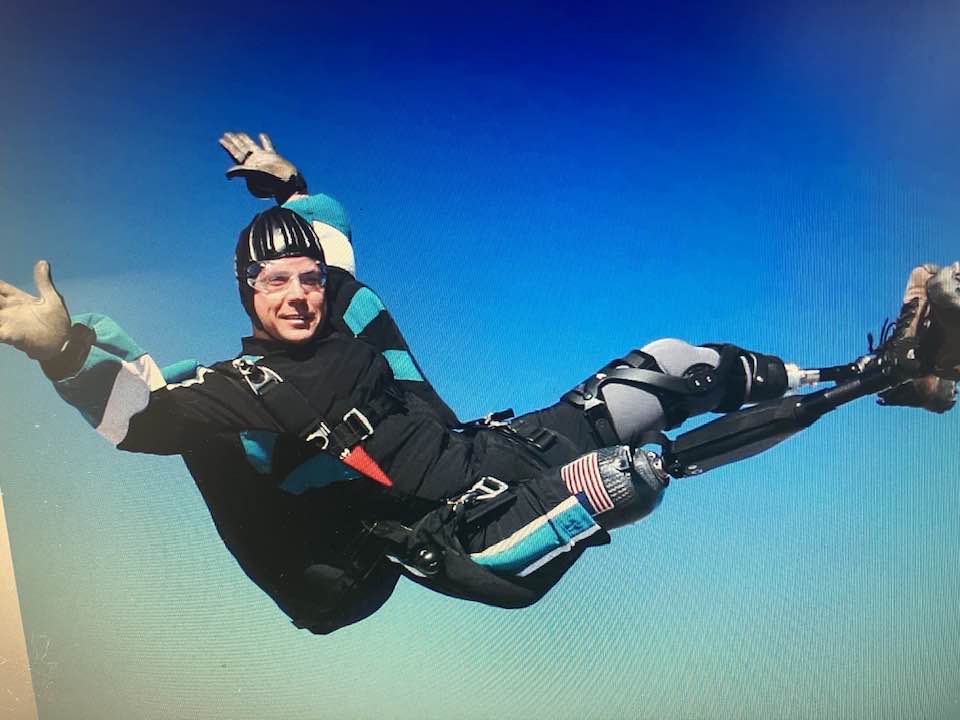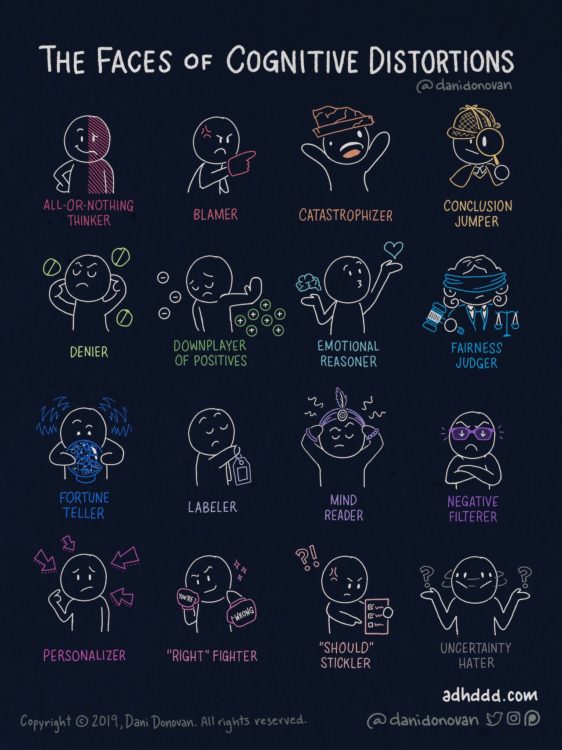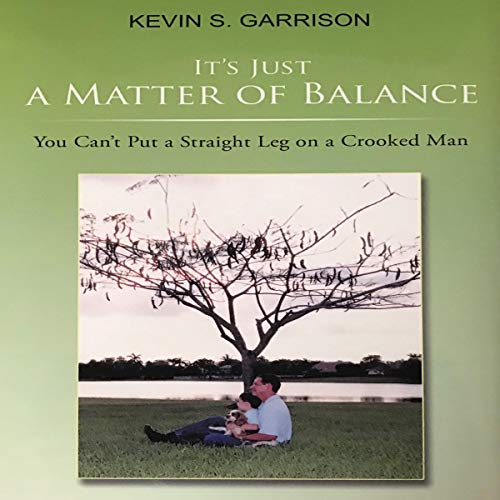
Is PTSD inevitable after an amputation? The major symptoms of PTSD are reliving the traumatic event in vivid nightmares, unwanted memories, and flashbacks. Heart palpitations and panic attacks occur as the trauma is relived. Patients report feeling wound up, unable to concentrate or sleep, and experiencing unprovoked intense anger. They are easily startled and apprehensive. The emotions are so overwhelming that emotional numbing, which may look like depression, begins to take place. These are intense symptoms, and statistics show PTSD in a substantial number of amputees as a result of a car crash or other traumatic event.
PTSD has a greater probability of occurring if there is traumatic pain. In my case, the skin on the soles of my feet had ulcers so deep that I could barely walk.
The most common traumatic event that leads to the loss of a limb is a car crash. Diabetics may have sudden excruciating leg pains coming from a blood clot or from diabetic peripheral neuropathy which also results in an amputation. The core of post-traumatic stress is the aftereffects of a life-threatening crisis that make the victims fear for their lives. Their fear that things are getting out of control may take other forms, such as migraines, headaches, dizziness, chest pain, breathing difficulties, and intense, never-ending nausea.
Since so much is going on, these secondary symptoms may not be associated only with PTSD. According to the US Department of Veterans Affairs, 15–35% of people suffering from chronic pain have PTSD. The VA concludes that chronic pain worsens PTSD by reminding sufferers of the traumatic event. Nightmares and flashbacks form the core of the disorder because they re-create the original trauma. Re-experiencing can enter dreams or come on suddenly in waking images or sensations of physical and emotional pain and fear. PTSD may cause insomnia, anxiety, and unsettled, shallow sleep.
The question of is PTSD inevitable after an amputation is answered. In my case, nightmares of trying to take a step and falling down woke me up in the first few weeks after my amputation. These symptoms can be terrifying for amputees because they are reliving the trauma of losing their limbs all over again. Triggers like thoughts, smells, seeing the stump, or noise can cause PTSD flashbacks. They can trigger flight-or-fight instincts. PTSD amputees suffer from persistent fears causing paranoia and depression.
With all this internal stress going on, a new amputee’s withdrawal is understandable. The focus of treatment for the first few weeks is strictly medical.
So you wake up in a hospital bed. It hasn’t sunk in that you have left the two-footed world and are now bedridden. It was not until I got to inpatient rehabilitation that there was any concern about my regaining strength. Even a week in a wheelchair can reduce your muscles to a whisper of your former self. The focus in rehabilitation is on regaining muscle strength and learning to do things safely. Impatience can compel you to learn personal hygiene skills you’d otherwise avoid. Returning home increases the risk as forgotten limitations lead to attempts.
In the first few weeks of being home, I fell five times and significantly damaged the healing of my stump. My social life and interests before the amputation were seriously diminished by being housebound. I was terrified to even ride in a car. My whole life changed. Losing interest in hobbies, activities, and friends that you used to be passionate about is very common. I don’t know how I could have made it through this medical crisis without the care of my loving wife. Her compassion and suggestions have helped me immensely. I will devote to how much she helped in my article on Recognizing PTSD in your significant other.
More About PTSD and its Effect
Another aspect of PTSD is its generalization to avoidance, panic attacks, and phobias. After your car crash, you avoid getting near the place of the accident. This fear may spread to being unable to drive or even ride in a car. It is easy for this fear to make it hard to cross the street or be near cars in a parking lot. When using a walker there may be an irrational fear of falling and an uncomfortable desire to not stand up for any length of time. This extends to not wanting to wear your prosthesis once it is fitted properly. Unless faced courageously, this can cause significant regression in regaining your mobility. In my case, the fear of falling down was almost overwhelming. I had to come to realize that I did everything I could to avoid falling again.
Repression, or the intentional blockage of memories associated with a past event or experience, is also a symptom of PTSD. The patient may destroy memories or immerse in work to cope. Not wanting to have any reminders of life before amputation is a way to avoid the current reality.
It’s very common for those with PTSD to try to numb their feelings. After all, it’s hard to suffer pain when you don’t feel any emotion at all. Emotional numbing often leads to gradual withdrawal and eventually complete isolation from social circles. This does not apply to feeling physical pain after the amputation but to a general lack of recognition of the psychological pain of adapting to a new lifestyle, e.g. not wanting to address the feelings of anger or sadness that come from seeing oneself as crippled or disabled.
One clear, almost universal symptom of PTSD is being easily startled. This comes from being hyper-vigilant to the point that even a slight commotion can cause a flight-or-fight reaction. A sudden noise like a car backfiring or a helicopter flying overhead can bring about an overwhelming response.
I often felt like I had become an emotional wreck and could never calm down. Hyperarousal can interfere with sleep and concentration, and it may also come out as outbursts of anger. When panic attacks cluster together, the residual fear and irritability begin to build. You hear amputees talk of “bad days when they can’t get out of bed.” Facing other people feels overwhelming, which can lead to irritability, indecisiveness, a total lack of concentration, sleeplessness, and difficulty maintaining personal relationships.
Changes in behaviors can make people with PTSD nervous. This could be as simple as a different reaction to things previously experienced. I felt a sense of seeing something that I had seen before but was reacting with different feelings and behaviors. Little things I could do without difficulty before my amputation created new frustrating feelings and angry behaviors. I was unable to sleep and had difficulty focusing on a single task,
My periods of hopelessness and negativity were not as severe as for others. I have heard other amputees say they feel hopeless, numb, and discouraged. Thoughts of suicide can come and go. Deep feelings of guilt and shame are common as well. Activities that used to be enjoyable no longer have the same return. Patients lose interest in activities and relationships they once enjoyed. This is particularly true as amputees identify more like patients and, in turn, turn significant others into caretakers. There are many aspects to the question PTSD is inevitable after an amputation.
Fear, Stress, and Being Out of Control
This transformation of relationship roles is fraught with difficulty. People with PTSD say that even when they are not in danger, they feel frightened and stressed. This puts them on high alert at all times, which is referred to as hypervigilance. I felt I was scanning the environment all the time. “High alert” doesn’t mean constant checking, but taking actions for safety. For example, in public places like a restaurant or lecture hall, people with PTSD might want to sit with their back to a wall so they can see what’s around them at all times.
Those PTSD patients who can’t get past their negative experiences may find it difficult to move forward and maintain a healthy life. They may blame themselves and constantly relive the event, wondering how they could have prevented it. Often, immense shame and guilt will set in if they blame themselves for the tragedy
Nightmares and flashbacks form the core of the disorder because they re-create the original trauma over and over again. This re-experiencing can enter dreams or come on suddenly in waking images or as sensations of physical and emotional pain and fear. It may cause insomnia, anxiety, and unsettled, shallow sleep.
In my case, nightmares of trying to take a step and falling down woke me up in the first few weeks after my amputation.
Treatment That Works
The best treatment for PTSD related to amputation is a combination of limited use of antidepressants that also reduce anxiety and psychotherapy with a professional, preferably someone who, themselves, has had an amputation.
The most well-established psychotherapy is cognitive-behavioral therapy. It is a psycho-social intervention that aims to resolve traumas from amputation like PTSD. CBT focuses on challenging and changing unhelpful cognitive distortions and behaviors, improving emotional regulation, and developing personal coping strategies that target solving current problems.

Learning how to live in the moment is often taught as one of the components of Cognitive Behavioral Therapy, and it can be effective in helping people deal with PTSD, according to the US Department of Veterans Affairs. The VA website cites a study that a specific type of meditation called mantra repetition (repeating a meaningful word) “had a small to moderate effect on PTSD symptoms among veterans with chronic PTSD as compared to treatment as usual alone.”
The site notes that an 8-week mindfulness meditation “intervention” was effective in improving symptoms, but it also notes that the symptoms returned once the meditation treatment ended. The VA also points out that additional support outside of the meditation practice could be the actual reason for the improvements. Other studies are showing CBT is helpful in managing the pain of amputation and helps with reducing the emotional strain of rehabilitation from an amputation.
A new treatment is Prolonged Exposure Therapy. Psychology Today notes this treatment approach involves the patient recalling details of a traumatic experience and talking about what happened, rather than trying to bury the memory where it can pop up unexpectedly. The concept focuses on bringing the cause of the trauma to the forefront, to neutralize its power from bubbling up from your subconscious memory and catching you off guard. Participants talk about their experiences 5 times or more in a single session while listening to their stories on tape.
The idea behind another treatment—Eye Movement Desensitization and Reprocessing (EMDR)—is to have the patient focus on a distraction while recounting a traumatic experience from a car accident through an amputation. During sessions that can last close to 2 hours, patients follow visual cues while talking about the source of their trauma. Unlike most forms of talk therapy, EMDR focuses less on the traumatic event itself and more on the disturbing emotions and symptoms that arise from it.
Treatment includes a hand motion technique used by the therapist to guide the client’s eye movements from side to side, similar to watching a pendulum swing. Some studies have shown that EMDR is effective for treating trauma associated with amputation, reducing the post-traumatic stress associated with the loss, and treating phantom pains. (These are pains coming from the part of the leg that was amputated.)
Magnetic Resonance Therapy has sort of a sci-fi ring to it, especially since it’s also referred to among patients as “brain zapping.” However, this therapy is credited for retuning the brain of a PTSD sufferer. Researchers may have found a way to improve a common treatment by changing the brain to respond less severely to fearful conditions, according to research published in The Journal of Neuroscience. This therapy sends pulses of electricity from magnetic coils to the cortex of the brain. It has apparently helped amputees reduce phantom pains as well as PTSD symptoms. This is a burgeoning field that can be looked to for more effective treatment for amputees.
Most PTSD treatment therapies fall under the umbrella of cognitive-behavioral therapy (CBT). The idea is to change the thought patterns that are disturbing your life. There are professionals out there that have gone through an amputation like me, and exactly what you are experiencing. Beware of therapists who say, “I have no idea what you are going through.”




